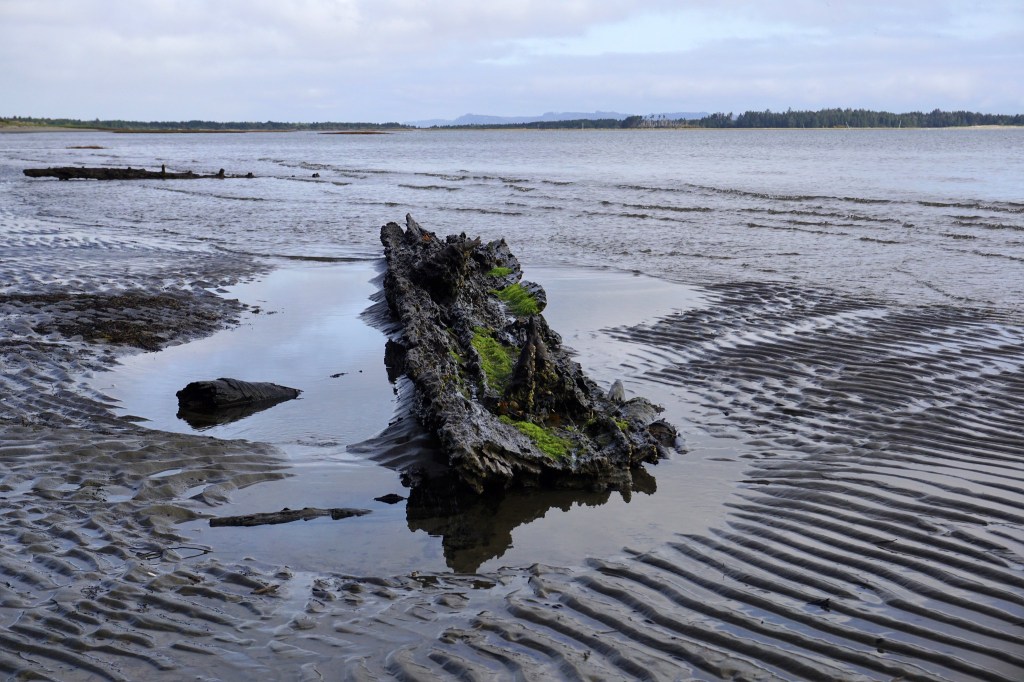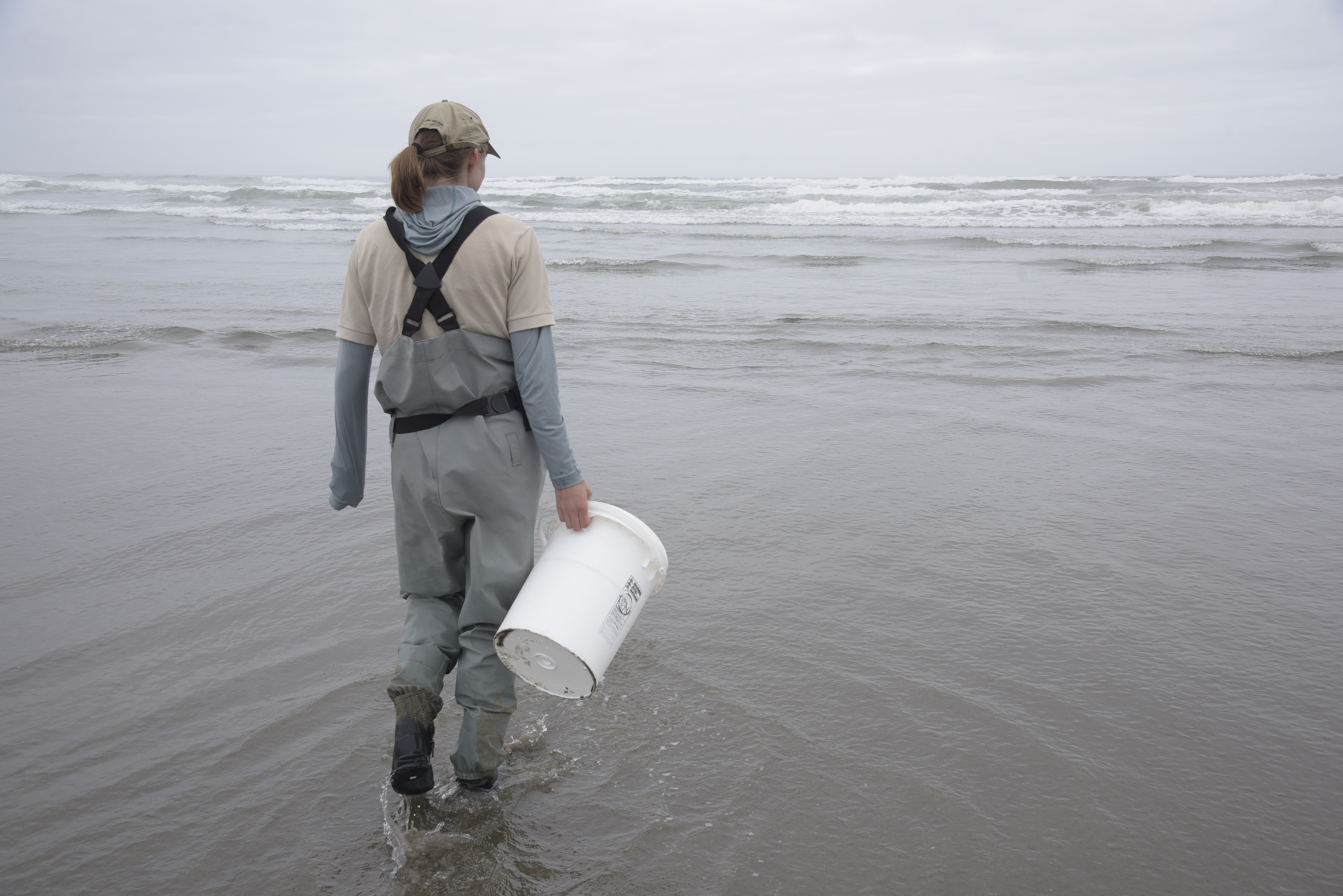Groups fear Trump will make changes at wildlife refuges
Published 5:19 pm Friday, May 9, 2025

- Willapa Bay from Leadbetter Point at Willapa National Wildlife Refuge, seen here in August 2023. Photo by Andrew LaValle/USFWS
Some staff have left, but public access unchanged
At a recent rally on Washington’s Long Beach Peninsula, retired attorney Cathy Cruikshank painted a picture of what she is worried will happen at Willapa National Wildlife Refuge if plans by the Trump administration to open public lands to private use and alter the Endangered Species Act move forward here.
Among her concerns were the possibilities of losing land that has been set aside to preserve habitat for threatened and endangered species; the loss of endangered Columbian white-tailed deer at the Julie Butler Hansen Refuge in neighboring Wahkiakum County; and future housing developments on Long Island where cedars that are over 900 years old still grow.
Trending
“Who speaks for the trees? Who speaks for the birds?” she asked rhetorically as some in the crowd yelled back, “I do!” and “We do!”
None of the things Cruikshank and others fear could happen at the refuge has happened — or seem likely to happen soon. The Willapa refuge encompasses more than 17,000 thousand acres of forests, tidelands, beaches and streams and those lands remain public. Staff continue to work on conservation and habitat management projects. Educational programs are still in motion.
But anxiety is high as the Willapa National Wildlife Refuge and other refuges in the Columbia River area overseen by the U.S. Fish and Wildlife Service weather recent turnover in leadership and loss of other staff and also face the potential for further budget and staffing cuts. People familiar with operations at Willapa National Wildlife Refuge say they expect ongoing strains on resources and staff capacity.
The Willapa refuge recently saw the departure of its long-time project manager, Jackie Ferrier. She had led the refuge for more than a decade. She opted to take a deferred resignation offered to federal employees as the Trump administration looks to reduce the federal workforce.
Her departure happened around the same time that Eric Anderson, acting project leader for the Ridgefield National Wildlife Refuge Complex, also took a buyout. That refuge complex, which includes four refuges, provides important habitat for migrating birds, among other things.
The nonprofit advocacy group National Wildlife Refuge Association says staff departures at the U.S. Fish and Wildlife Service and across the refuge system this spring represent a “conservation brain drain.”
Trending
“The people leaving have dedicated their careers to maintaining habitats, leading visitor programs, monitoring endangered species, and building deep ties to communities,” the nonprofit said in a written statement in April. “Losing them threatens the very foundation of how our national wildlife refuges function.”
The association has also noted that the refuge system has long been underfunded and understaffed and rising costs have not kept pace with inflation. Under the Trump administration, the Fish and Wildlife Service could see a loss of $170 million in discretionary funding, money described by the White House budget office as funding nonessential grant programs for conservation of species managed by states, tribes and other countries.
Matt Lloyd, the deputy project leader at Willapa National Wildlife Refuge, confirmed with KMUN that he is working as the acting project manager following Ferrier’s departure for now. He also confirmed that the changes in refuge staffing will not impact public access at this time. He said he could not speak to other issues the refuge may face going forward.
Ferrier declined to be interviewed for this story.
“As part of the broader efforts led by the Department of the Interior under President Trump’s leadership, we are implementing necessary reforms to ensure fiscal responsibility, operational efficiency, and government accountability,” a spokesperson for USFWS said in a statement, adding, “While we do not comment on personnel matters, the U.S. Fish and Wildlife Service remains committed to fulfilling our mission of conserving fish, wildlife, and natural resources for the American people.”
Cruikshank, who lives in Seaview, is an avid user of the Willapa National Wildlife Refuge. She told KMUN that Willapa might be partially protected by its anonymity, located as it is in a small corner of rural Washington.
But she wanted to make sure the refuge was on people’s minds at the rally in April.
“What’s happening to the people at the refuge is the same thing being repeated for all federal employees,” Cruikshank told KMUN. “Abrupt changes in structure, lots of forced resignations and indeed even forced retirements and loss of institutional memory.”
She said the refuge has done important work to restore habitat for numerous species and many different segments of the community interact with refuge lands, from people like her who like to watch migrating birds pass through to others who might value the refuge for the hunting access it provides.
The Friends of Willapa National Wildlife Refuge, a nonprofit that works with the refuge and helps support refuge programs, expects to continue as it always has for now.
Still, they too are concerned by staff and funding cuts at the Fish and Wildlife Service and other agencies involved with natural resources, said Pat Welle, president of the Friends of Willapa National Wildlife Refuge.
The Friends group itself has a small board and limited capacity.
“But we’re working with the refuge as close as we can,” Welle said. That includes stepping up with additional volunteers when possible.
“The community needs to know that the refuge is there and it’s a wonderful place to spend time,” she said, adding, “We hope people appreciate having the value of that natural resource right here in their backyard.”









